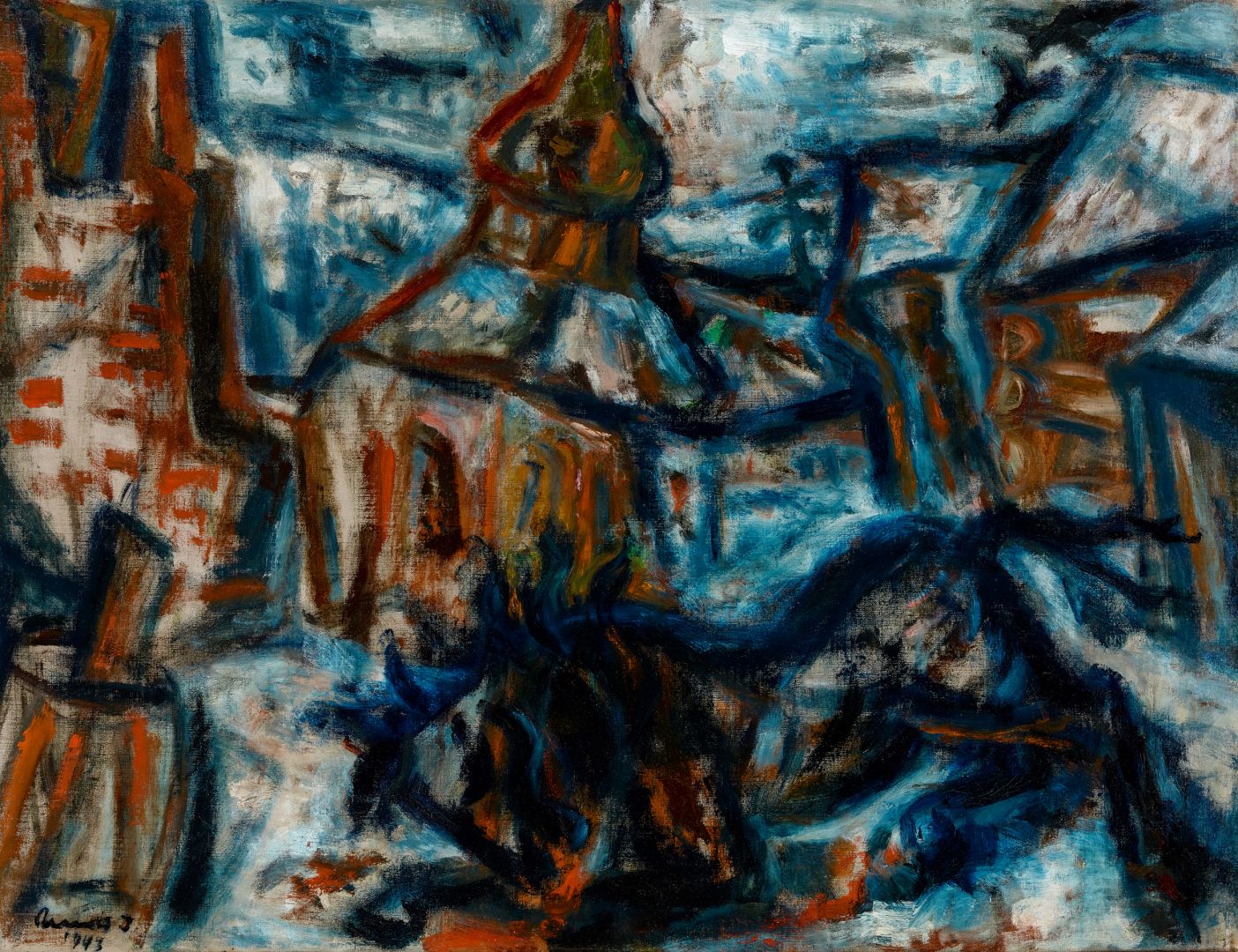Hall 4 - 6. view
War (Horse Cadaver)
ÁMOS, IMRE (1907–1944)
War (Horse Cadaver), 1943
oil on canvas, 77x59 cm; marking in the lower left: Ámos I. 1943
Fine Arts Collection, Inv. No.: 72.41.
The visionary works of Marc Chagall, along with a religious upbringing and the looming threat of war were all major influences on the unique artistic vision of Imre Ámos. The painter described his work as ‘associative expressionism’, which sought to convey spiritual events through memories that emerge from the unconscious. These works consist of various motifs in constructive engagement and a web of dark contours that ultimately end up forming the compositions. His sketchy lines are made vibrant by the use of contrasting patches of colour.
With the rise of anti-Semitism, the artworks of Ámos became dominated by depictions of a fearful, troubled mindscape. Starting from 1940, the Jewish artist was forcibly taken to labour camps on several occasions. He created War after his longest labour service on the Eastern Front and it is clearly influenced by the horrors he had to endure there for several months. The image depicts buildings that are about to collide with each other as the very perspective of the image itself unravels. We see an abandoned animal in the foreground in its death throes. The combination of the blue and white colours chill the viewer to the bone, and even the fire reflected on the building walls feel devoid of any warmth, serving as an omen of destruction instead. It is clear that Ámos no longer had any place where he could find refuge in such a chaotic world. Just as the horse perished in this image, so would he wind up lost in the turmoil of World War II.
The painting was purchased by Margit Anna, the widow of the artist in 1971.
Art historian Zsolt Kishonthy wrote an outstanding study on this artwork, which can be found in the following publication (in Hungarian): A Miskolci Herman Ottó Múzeum Közleményei 20. Miskolc, 1982. 63–67.
Andrea Pirint
